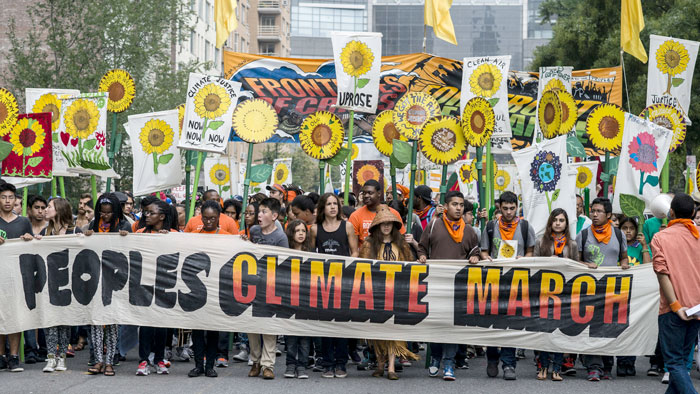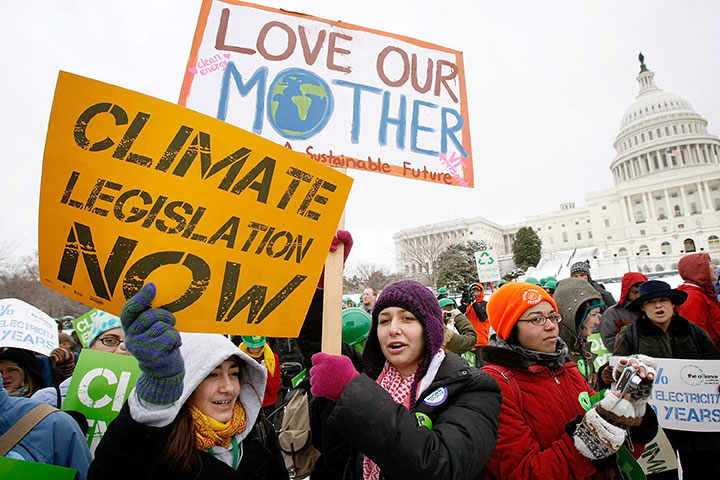| It’s Our Turn to Help Earth | |||||
| by K.C. Whiteley | |||||
|
|||||
|
|||||
|
Did you know that this past July was the hottest month ever recorded in Vermont? Add in high humidity and you get what Scott Whittier, National Weather Service meteorologist in Burlington, calls the heat index. “The heat index values were over 100—some approaching 110, which has never occurred. Those type of values are very dangerous to all people,” he said. Vermont is not alone. Record high temps are being posted around the world. Washington Post weather editor Jason Samenow reported on records set in places like Northern Siberia along the Arctic Ocean where temperatures reached 40 degrees above normal. In Africa in July, the hottest temperature ever measured anywhere hit 124.3 degrees Fahrenheit in Algeria. We can expect more of these extremes as our planet grows warmer. Beyond these record-breaking temps, it’s impossible not to notice extreme weather events around the country, like uncontrollable wild fires, record flooding caused by hurricanes, and rapidly rising sea levels. Though Vermont has avoided drastic extremes, greenhouse gas emissions continue to increase in this state at a disturbing rate. In its Greenhouse Gas Emissions Inventory Update for 2009–2015, published June 2018, the Vermont Agency of Natural Resources noted that “greenhouse gas (GHG) emissions estimates in Vermont continued to rise for calendar year 2015, increasing from 9.45 million metric tons CO2 equivalent (MMTCO2e) in 2014 to 9.99 MMTCO2e in 2015. This increase puts Vermont approximately 16% above the 1990 baseline value of 8.59 MMTCO2e and adds to the difficulty of reaching the statewide goal of 50% below 1990 emissions levels by 2028.” The most extensive data report on Vermont’s challenges in meeting our renewable energy goals can be found in the “2017 Annual Report” (http://eanvt.org/2017annualreport/) of the Energy Action Network (EAN). The report highlights the need for progress in our transportation and heating sectors: “Although we have seen some progress in our electricity sector which makes up 27% of total energy use, we are falling far behind in the transportation and heating sectors which are responsible for 70% of our greenhouse gas emissions. It is in these areas that real action is needed if we hope to come close to our first benchmark of being 25% renewable by 2025.” Vermont’s legally binding goal is to reduce greenhouse gas emissions to 50 percent of 1990 levels by 2028; meanwhile, our emissions have been increasing since 2011, and we’re now 16 percent above 1990 levels. Clearly, we are moving in the wrong direction. Despite this dire situation requiring immediate action, Vermont is lacking leadership at the higher levels of government, in the legislative and executive branches. In July 2017, Gov. Scott appointed a 21-member Climate Action Commission to come up with recommendations to reduce greenhouse gas emissions and combat climate change. The commission was charged with gathering public input and research that would lead to actionable recommendations to address climate change while benefiting businesses in Vermont. This past December, the commission released its initial set of five preliminary recommendations, in time for the legislature to consider how to move them forward. They were: (1) support advanced wood heat; (2) increase pace of weatherization; (3) study all regulatory and market decarbonization mechanisms; (4) foster the climate economy; and (5) electrify the transportation system. (You can read the full report at https://tinyurl.com/ya8wkqud) The commission recommended an “independent, non-partisan evaluation of the full spectrum of regulatory and market-based approaches to reducing Greenhouse Gas (GHG), including carbon pricing mechanisms, carbon market opportunities, and regulatory control policies.”
Though these recommendations were relatively humdrum, Scott wasted no time rejecting them. Undeterred, the House Committee on Natural Resources, Fish, and Wildlife took up a bill, H.763, directing the legislature’s Joint Fiscal Office to analyze financial impacts of reducing Vermont’s greenhouse gas emissions, including a carbon tax and a cap-and-trade program. When the Climate Action Commission released its final report in July 2018, it came as no surprise that it had retreated from the five consensus strategies and was offering, instead, a laundry list of 53 separate recommendations, some of which have been in the works for some time. A number of commissioners held firm in advocating for a carbon emissions cap like Quebec’s. Johanna Miller, the lone commissioner representing an environmental group (Vermont Natural Resources Council), proposed a recommendation to designate an emissions cap by 2021 “unless there is significant progress in greenhouse gas emissions over the next three years.” Her recommendation was voted down by the commissioners, 11 to 7. Ben Walsh, climate and energy program director for the Vermont Public Interest Research Group, noted that “the report is not a plan, but rather a cobbled-together, unranked list of more than 50 recommendations varying in size, scope and specificity. Remember: the sole purpose of the commission was to put forward an actionable plan to meet our climate and energy commitments, but most of the report is just a warmed-over recitation of solutions that have been on the table—and we have known we should be pursuing—for years.” Even commission co-chair and deputy of the Agency of Natural Resources Peter Walke noted: “I wouldn’t use this as the basis to say, ‘if we did all these things we would get there.’” Pointing out that Vermont has renewable energy standards for electricity but none for reducing fossil fuel use in the transportation and heating sectors, Jared Duval, executive director of EAN, said, “If we do not move to capping emissions for additional sectors of our energy economy beyond electricity … we are likely to continue falling far short of our stated commitments. In short, markets don’t move without market signals and the policies and regulations to set the rules of the road.”
Margaret Wheatley defines a leader as “anyone willing to help, anyone who sees something that needs to change and takes the first steps to influence that situation.” If we’re worried that we have no national leaders right now, she says we’re looking in the wrong place, and need to look locally: “We need to look at ourselves.” Wheatley suggests that “the process that creates change in the world is quite straightforward. We notice something that needs to be changed. We keep noticing it. The problem keeps getting our attention … we start to act, we try something. …We learn as we go… we keep going.” She reminds us that we create more energy each time we experience a success and more people join us: “If we have an idea … or want to resolve an injustice, we can step forward to help. Instead of being overwhelmed and withdrawing, we can act. We don’t need to spend much time planning or getting senior leaders involved; we don’t have to wait for official support. We just need to get started.” This is how the world changes. Little by little, step by step, we can resolve the frightening issues of this time and restore hope for the future. Let’s get Vermont on the right path forward and elect leaders who will do that. After all, it’s our turn to help the world.
|
|||||
|
|||||
|
K.C. Whiteley, a climate justice activist with 350VT and 350NOLA, resides in Montpelier and New Orleans.
|
||||


